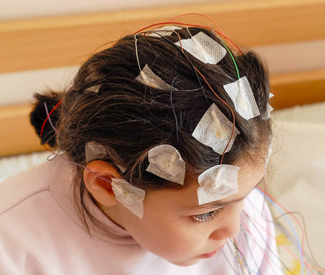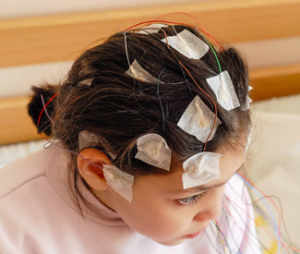Navigating epilepsy and its many symptoms – including recurring or chronic seizures – can be a tall task, especially for newly diagnosed patients and their caregivers.
Here, we’ll survey what epilepsy is, how it affects patients, how neurologists classify the various types of epilepsy, and potential treatment options.
Seizures vs epilepsy: what’s important to understand?
The terms “seizure” and “epilepsy” are often intertwined, but they actually have distinct meanings.
A seizure is a single event due to an abnormal discharge from the brain.
Epilepsy, on the other hand, is a syndrome of recurrent seizures.
It’s important to understand that every individual with epilepsy has seizures, but not every person who has a seizure has epilepsy.
Seizures can be caused by numerous conditions and injuries. They also vary widely by type.
What are the different types of seizures?
Let’s briefly survey the different types of seizures that epilepsy patients can experience. Properly diagnosing the exact cause and type of a seizure is essential for designing an effective treatment regimen.
Generalized seizures
These seizures involve the whole brain at once and consciousness is impaired. The following are different types of generalized seizures:
- Absence
- Atonic
- Clonic
- Myoclonic
- Tonic
- Tonic Clonic
Partial seizures (focal seizures)
These seizures are focal, coming from one area, on one side of the brain. They may or may not spread to involve wider areas of the brain. The following are the basic types of partial:
- Simple seizures mean that consciousness is maintained.
- Complex partial seizures indicate impaired consciousness.
- Febrile: These seizures are a “benign” form of epilepsy that affects about 5% of children between 1 and 6 years of age. The development of these seizures is associated with a fever. Approximately 7% of children who experience a febrile seizure will develop epilepsy.
Epileptic vs non-epileptic seizures
Aside from the focal vs generalized distinction, seizures can be further classified according to two designations epileptic and non-epileptic seizures:
- Epileptic seizures occur when a defect in brain function causes abnormal electrical discharges
- Non-epileptic seizures do not occur as a result of abnormal electrical activity. They have no obvious physical cause, and the brain scan of people who experience non-epileptic seizures often look normal. Frequently, clinicians chalk non-epileptic seizures up to psychological stress in the absence of any confirmation of a physical cause.
The most reliable test to differentiate between epileptic and non-epileptic seizures is an electroencephalogram (EEG).
How is epilepsy treated?
The evidence, along with our clinical experience, confirms that individuals experiencing epilepsy should have great confidence that their condition can, in fact, improve with appropriate medication and therapy.
Whereas epilepsy was previously a justifiably feared condition that didn’t offer an optimistic prognosis to patients, medical advancements have come a long way to effectively manage and treat epilepsy. When the condition is well-managed, patients with epilepsy now live fulfilling, fulsome lives.
Here are some of the tools that neurologists use to treat epilepsy:
- Medication. Commonly prescribed medications to alleviate epilepsy symptoms include carbamazepine, lamotrigine, and sodium valproate.
- Vagus Nerve Stimulator. The vagus nerve, which neurologists have dubbed the “pacemaker of the brain,” regulates brain activity and is therefore involved in the pathogenesis of epilepsy. To implant a vagus nerve stimulator, the surgeon attaches the small device to the left chest area, and wraps a wire around the vagus nerve, providing regular stimulation.
- Ketogenic Diet. You may have heard of the ultra high-fat, minimal-carb ketogenic diet (“keto” for short) in the context of weight loss. Because the keto diet switches the body’s metabolism (including the brain’s) from running on blood sugar to utilizing fat bodies called ketones, there is solid evidence that, in some patients, it can normalize brain electrical activity.
- Surgery. The final, and most drastic, treatment for epilepsy is surgery, including resective surgery and laser interstitial thermal therapy (LITT). Surgery is often viewed as the last resort where other interventions have failed to produce acceptable results. Patients, in consultation with their doctors, need to weigh carefully the pros and cons of surgery, as it does come with inherent risk.
What is proper first aid protocol for seizures?
Here’s what you should do to help an epilepsy patient in the event of a seizure in the home or workplace:
- Move the person to safety
- Do not put anything in the person’s mouth
- Loosen clothing around neck, making it easier to breathe
- Remove any sharp objects that may be near the individual
If the person is convulsing:
- Do not hold down or restrain him or her
- Gently turn him or her onto one side to help keep the airway clear
- Remain calm and try to calm bystanders
- Never leave someone alone during or after a seizure
Contact Child Neurology Center of Northwest Florida to learn more about epilepsy
If the quality of life for you or a loved one is impacted negatively by epilepsy, and you would like to learn more about what you can do to combat this condition and regain your life, please contact us.
In the meantime, also check out this helpful explainer video from The Epilepsy Foundation, one of the largest philanthropic organizations in the world funding the fight against epilepsy through research and innovation.




